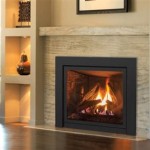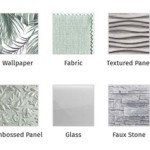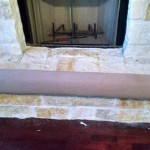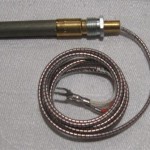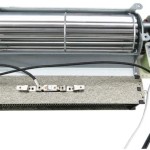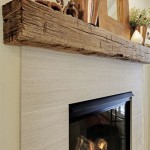How Much To Install A Wood-Burning Fireplace Insert: A Comprehensive Guide
Installing a wood-burning fireplace insert can be a significant home improvement project, offering improved heating efficiency and a more aesthetically pleasing focal point compared to a traditional open fireplace. However, understanding the costs involved is crucial for budgeting and planning effectively. The price of a wood-burning fireplace insert installation can vary considerably based on numerous factors, including the insert's model and size, the complexity of the installation process, and local labor rates. This article provides a detailed breakdown of the costs associated with installing a wood-burning fireplace insert, equipping homeowners with the information needed to make informed decisions.
Before delving into the specific cost elements, it’s important to understand the core components of a wood-burning fireplace insert. An insert is essentially a self-contained firebox designed to fit inside an existing masonry fireplace. It is typically made of cast iron or steel and is sealed to prevent smoke and creosote from entering the home. A key component of the installation is the flue liner, a pipe that runs from the insert to the top of the chimney, providing a safe and efficient pathway for exhaust. The installation process often involves preparing the existing fireplace, installing the flue liner, connecting the insert, and ensuring proper ventilation.
Factors Affecting the Cost of Wood-Burning Fireplace Insert Installation
Several factors contribute to the overall cost of installing a wood-burning fireplace insert. Understanding these variables is essential for obtaining accurate estimates and avoiding unexpected expenses.
1. The Cost of the Wood-Burning Fireplace Insert: The insert itself represents a significant portion of the total installation cost. Prices can vary widely depending on the brand, size, heating capacity (measured in BTUs), efficiency, and included features. Basic models may start around $1,500, while high-end models with advanced features like catalytic combustors, automatic blowers, and larger fireboxes can cost upwards of $4,000 or even $5,000. Choosing an insert that is appropriately sized for the room it will be heating is crucial for optimal performance and efficiency. Over-sizing can lead to uncomfortable temperatures, while under-sizing may not provide sufficient heat.
2. Chimney Liner Installation: A properly sized and installed chimney liner is paramount for the safe and efficient operation of a wood-burning fireplace insert. It is typically required by building codes and manufacturer specifications. The flue liner prevents dangerous gases and creosote from leaking into the home and ensures adequate draft for proper combustion. The cost of a chimney liner installation can range from $800 to $3,000 or more, depending on the height of the chimney, the type of liner used (typically stainless steel), and the complexity of the installation. Difficult access to the chimney, obstructions within the flue, or the need for specialized equipment can increase the cost. Some installations may require insulation around the liner, which will add to the overall expense.
3. Fireplace Preparation and Masonry Work: Before installing the insert, the existing fireplace may require some preparation. This could involve cleaning the firebox, removing debris, repairing cracks in the firebox or surrounding masonry, and ensuring the firebox opening is appropriately sized for the insert. Extensive masonry work, such as rebuilding a damaged firebox or modifying the fireplace opening, can significantly increase the cost. Simple cleaning and minor repairs might add $100 to $500 to the bill, while more substantial masonry work could cost several hundred to several thousand dollars.
4. Installation Labor Costs: Labor costs typically account for a substantial portion of the overall installation expense. The rates charged by installation professionals can vary based on their experience, licensing, insurance, and the local market. A typical installation might take one to two days to complete, and labor rates can range from $75 to $200 per hour or more. The total labor cost will depend on the complexity of the installation, the type of insert being installed, and any unforeseen challenges that arise during the process. It's always recommended to obtain multiple quotes from qualified and licensed installers to ensure a competitive price and to compare their services and experience.
5. Permits and Inspections: Most municipalities require permits for installing wood-burning fireplace inserts. Obtaining a permit involves submitting plans and paying a fee, which can range from $50 to $200 or more, depending on the location. The installation will also need to be inspected by a building inspector to ensure it complies with local codes and regulations. The cost of the inspection is usually included in the permit fee. Failing to obtain the necessary permits and inspections can result in fines, legal issues, and potential safety hazards.
6. Additional Materials and Accessories: In addition to the core components, several other materials and accessories may be required for the installation, such as a block-off plate (to seal off the area above the insert), insulation, hearth extensions, and decorative trim. These items can add to the overall cost, and the specific requirements will vary depending on the insert model and the existing fireplace setup. The cost of these additional materials can range from a few hundred dollars to several hundred dollars, depending on the specifics of the installation.
7. Geographic Location: The cost of installing a wood-burning fireplace insert can also vary depending on geographic location. Labor rates, material costs, and permit fees can differ significantly from one region to another. Areas with higher costs of living typically have higher installation expenses. Additionally, the prevalence of wood-burning appliances in a particular area can affect the availability of qualified installers and the competition among them, which can impact pricing.
Breaking Down the Estimated Costs
To provide a clearer understanding of the potential costs, here's a breakdown of the estimated expenses associated with installing a wood-burning fireplace insert. It's important to note that these are just estimates, and actual costs may vary.
Insert Purchase: $1,500 - $5,000+
Chimney Liner Installation: $800 - $3,000+
Fireplace Preparation: $100 - $500+ (more if extensive masonry work is needed)
Installation Labor: $500 - $2,000+ (depending on complexity and hourly rates)
Permits and Inspections: $50 - $200+
Additional Materials: $100 - $500+
Therefore, the total cost of installing a wood-burning fireplace insert can range from approximately $3,050 to $11,200 or more. A mid-range installation, including a decent insert, chimney liner, and professional installation, would likely cost between $5,000 and $8,000.
Key Considerations Before Installation
Before proceeding with the installation of a wood-burning fireplace insert, homeowners should consider several key factors to ensure a successful and safe project.
1. Chimney Condition: A thorough inspection of the chimney is crucial to assess its structural integrity and ensure it is suitable for a wood-burning fireplace insert. Cracks, deterioration, or other damage can compromise the safety and efficiency of the installation. A qualified chimney sweep or mason should perform the inspection and recommend any necessary repairs before the insert is installed. Addressing chimney issues proactively can prevent costly problems down the road.
2. Proper Sizing: Selecting the appropriate insert size is essential for optimal heating performance and efficiency. An insert that is too small may not provide sufficient heat, while an insert that is too large can lead to overheating and inefficient fuel consumption. The size of the room to be heated, the insulation level of the home, and the local climate should be considered when determining the appropriate BTU rating for the insert. Consulting with a qualified installer can help homeowners choose the right size insert for their needs.
3. Qualified Installation: It is strongly recommended to hire a qualified and experienced installer to ensure the proper installation of a wood-burning fireplace insert. A professional installer will have the knowledge and expertise to safely and efficiently install the insert, chimney liner, and other components, and to ensure compliance with local codes and regulations. Check for certifications like NFI (National Fireplace Institute) or CSIA (Chimney Safety Institute of America) to verify the installer's credentials. Asking for references and checking online reviews can also help in selecting a reputable and reliable installer.
4. Fuel Source and Storage: Wood-burning fireplace inserts require a readily available and properly stored supply of firewood. Homeowners should consider the cost and availability of firewood in their area and ensure they have adequate space to store it in a dry and protected location. Seasoned firewood (wood that has been dried for at least six months) burns more efficiently and produces less smoke and creosote than green wood. Improperly stored or unseasoned firewood can lead to inefficient heating, increased creosote buildup, and potential safety hazards.
5. Maintenance and Safety: Wood-burning fireplace inserts require regular maintenance to ensure safe and efficient operation. This includes regular chimney sweeping to remove creosote buildup, inspecting the insert and chimney for damage, and following the manufacturer's recommendations for cleaning and maintenance. Installing carbon monoxide detectors in the home is also crucial for safety, as wood-burning appliances can produce carbon monoxide gas. Familiarizing oneself with safe operating procedures and following them diligently can prevent accidents and ensure the longevity of the insert.
Understanding the costs and considerations associated with installing a wood-burning fireplace insert is crucial for making informed decisions and ensuring a successful home improvement project. By carefully planning and budgeting, homeowners can enjoy the benefits of efficient heating and the ambiance of a wood-burning fire for years to come.

Estimated Page Fireplaces Stoves Inserts Wood Gas Pellet

Estimated Page Fireplaces Stoves Inserts Wood Gas Pellet

Wood Burning Fireplace Inserts Insert Installation

Fireplace Insert Installation Wood Burning Inserts

How Much Does It Cost To Install A Wood Stove Insert Greene County Mo Benton Ar Ozark

Installing A Wood Fireplace Insert Rockford Chimney
.aspx?strip=all)
Cost Of Operating A Wood Insert Cord Calculator Regency

Wood Fireplace S Installation Chimney Sweeps Of America

Fireplace Inserts 5 Money Saving Benefits Efficient Heating

Fireplace Installation Cost 2024 Gas Wood Burning Electric
Related Posts

